Excerpts from Jim Conrad's
Naturalist Newsletter
from the March 22, 2019 Newsletter issued from Rancho Regensis north of Valladolid, Yucatán, MÉXICO;
elevation ~40m (~130 ft), N~20.876°, W~88.170°
PARÁ GRASS
Along the highway to Timozón, all along the pavement one of the most commonly occurring grassy weeds entangles so promiscuously with surrounding vegetation that at this season you just see modestly arrayed flowering heads rising above the weedy clutter atop knee high stiff, slender stems, as shown below:
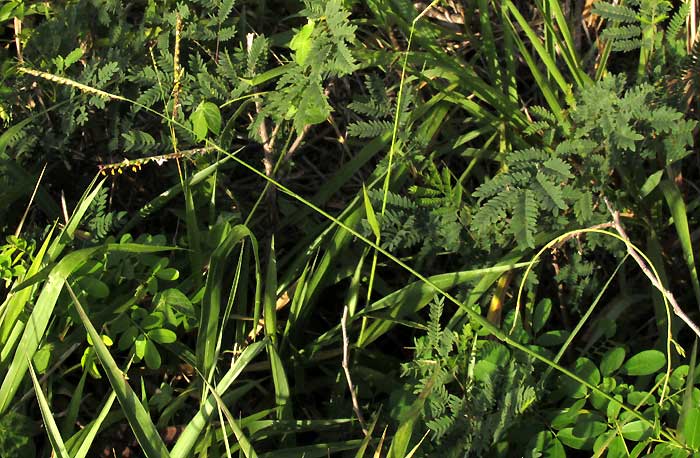
The lush greenness in that picture is in stark contrast to the nearby woods and fallow cornfields, which are scorched brown here in the late dry season. I think this roadside greenness is possible because water from our rare showers runs off the asphalt, giving the near roadside extra watering. Also, these weeds are just tough, adaptable beings putting up a good fight in an extreme environment. Whatever the case, our roadside grass's head consisting of three spike-like branches with all their spikelets arising from just one side of their branch axis, or rachilla, is shown more clearly below:
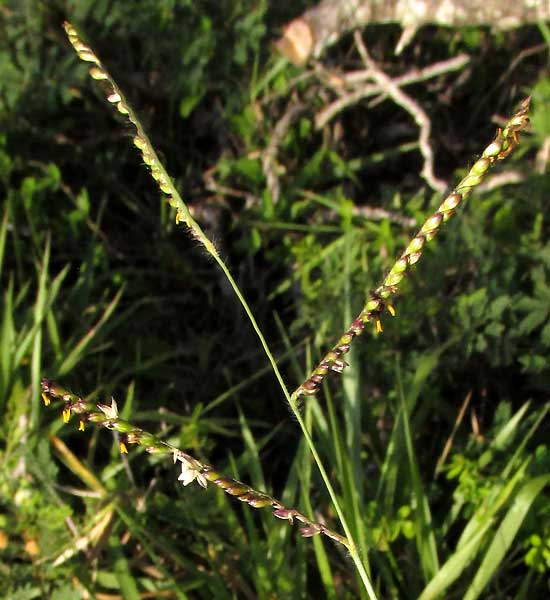
Those narrow, stiff, spike-like branches are similar to what was seen on the Paspalum just looked at. In fact, I kept thinking we had another Paspalum species as I took the following pictures. First, below, look at the grass's Paspalum-like spikelets at the peak of their sexual activity:
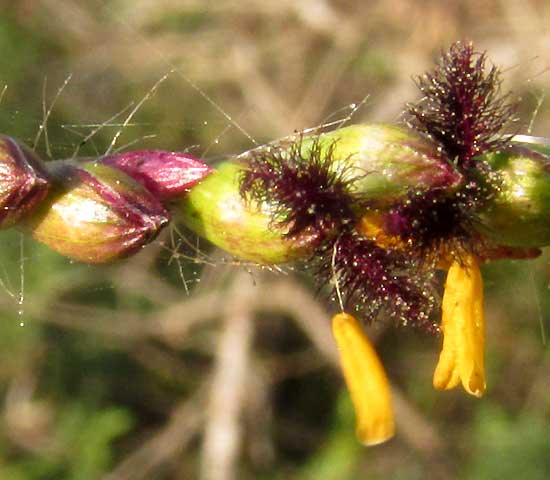
The dangling, yellow, banana-like items are the stamens' anthers. Notice that the anther at the right has a hole at its bottom, where pollen dribbles out. Above the anthers, the dark purple, feathery items are stigmas, the pollen-receiving part of a pistil. The stigmas' broad featheriness provides plenty of surface area for catching air-borne pollen. Other very important identification features are shown below:
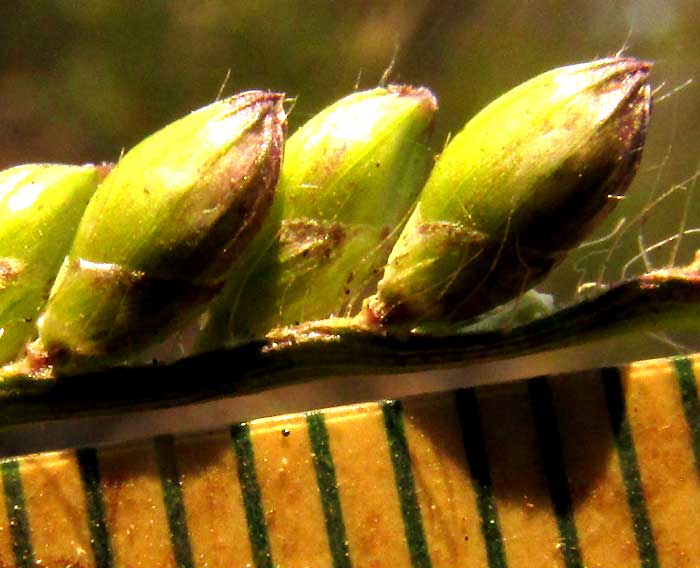
As with the previous Paspalum species, besides the spikelets lining up on one side of the rachilla, and the rachilla being somewhat flattened and narrow, the big fieldmark is that the spikelets are about 4mm long (3/16th inch). Theypre longer than almost any Paspalum spikelet, so at this point the Paspalum idea starts getting shaky. A ligule with its associated stem node is shown below:
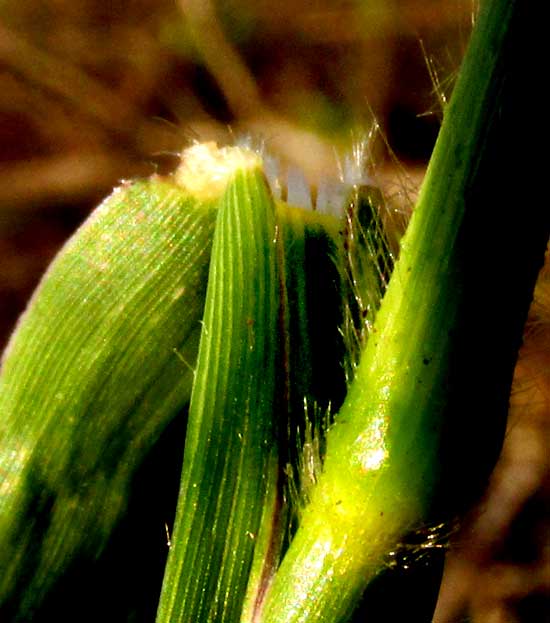
The ligule consists of a jagged-topped, short-hairy membrane split to the bottom here and there. Also note that the stem's node area bears long stiff hairs, which thin out both above and below. And, the sheath and leaf's undersurface are both practically hairless. These seem like gnat-picking details, but they're important for identification.
All these features led me to UROCHLOA MUTICA, thought to be native to northern and central Africa and parts of the Middle East, but now an invasive species throughout much of the rest of the world's tropics, subtropics and warmer Temperate Zones, including Florida and Hawaii in the US. Urochloa mutica goes by many English names, but the one seeming to be catching on most is Pará Grass. One reason for its vast distribution is that it's often planted as fodder and as pasture grass.
We met our first Urochloa species up in Texas, where one name for it was Signalgrass. You may enjoy comparing the details of that Texas species with the current one -- the "variation on a theme" thing -- by visiting www.backyardnature.net/n/h/urochloa.htm
I read that some Urochloa species so closely resemble species in either the genus Panicum or Paspalum that at times they have been placed in those genera. I'm not the only one who can confuse these look-alike species. However, even being confused by them and having to look closer and closer at them, I get from them what I want.